Transformative designs: Award-winning concepts that could shape our future
These are just some Red Dot Award: Design Concept winners we want to see in the market
[SINGAPORE] From robotics and artificial intelligence (AI)-driven solutions to simple, yet elegant designs that simply make everyday living a little more convenient – that’s what you’ll find on the list of Red Dot Award: Design Concept winning entries this year.
The award, which seeks to identify and celebrate new design concepts and innovations, covers categories ranging from architecture and products to communication. Entries come from companies and design students around the world and the best concepts are given a Red Dot: Best of the Best accolade. From these winners, the top achievement receives the Red Dot: Luminary.
This year, the top honour went to the Strutt ev1 smart electric wheelchair. Strutt, the Singapore startup behind the concept, will produce the ev1 at its upcoming Bulim Square facility. This is a move we’d like to see from other winners of the Red Dot: Best of the Best. Here are the ones on our list:
Circus Autonomy One (CA-1) by Circus, Germany
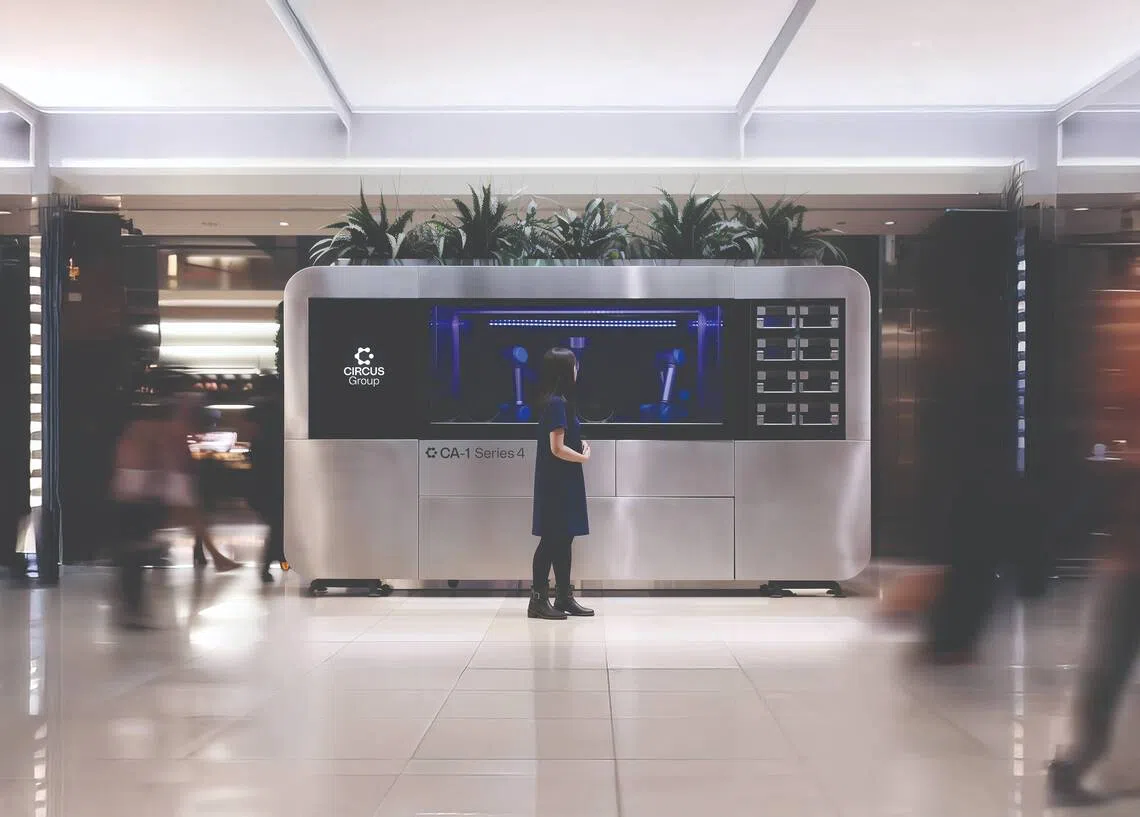
We’ve seen assistive kitchen devices or conveyor belt-driven systems, but this food production machine is a completely different creature. Touted as the world’s first industrial-scale autonomous meal production robot, the CA-1 operates fully independent of human intervention.
Combining embodied intelligence, voice interaction and real-time adaptive decision-making, it can produce up to 500 meals per load with consistency, speed and minimal waste. The CA-1’s compact and minimalist frame is designed to suit public-facing environments, while its dynamic touchscreen and conversational voice AI offer an intuitive interface. Could it be the answer to labour shortages in the food and beverage industry? Given that production of CA-1 began last month, we might well see school canteen meals served by this robot in future.
Fire Extinguisher “Here” by Foundfounded, South Korea
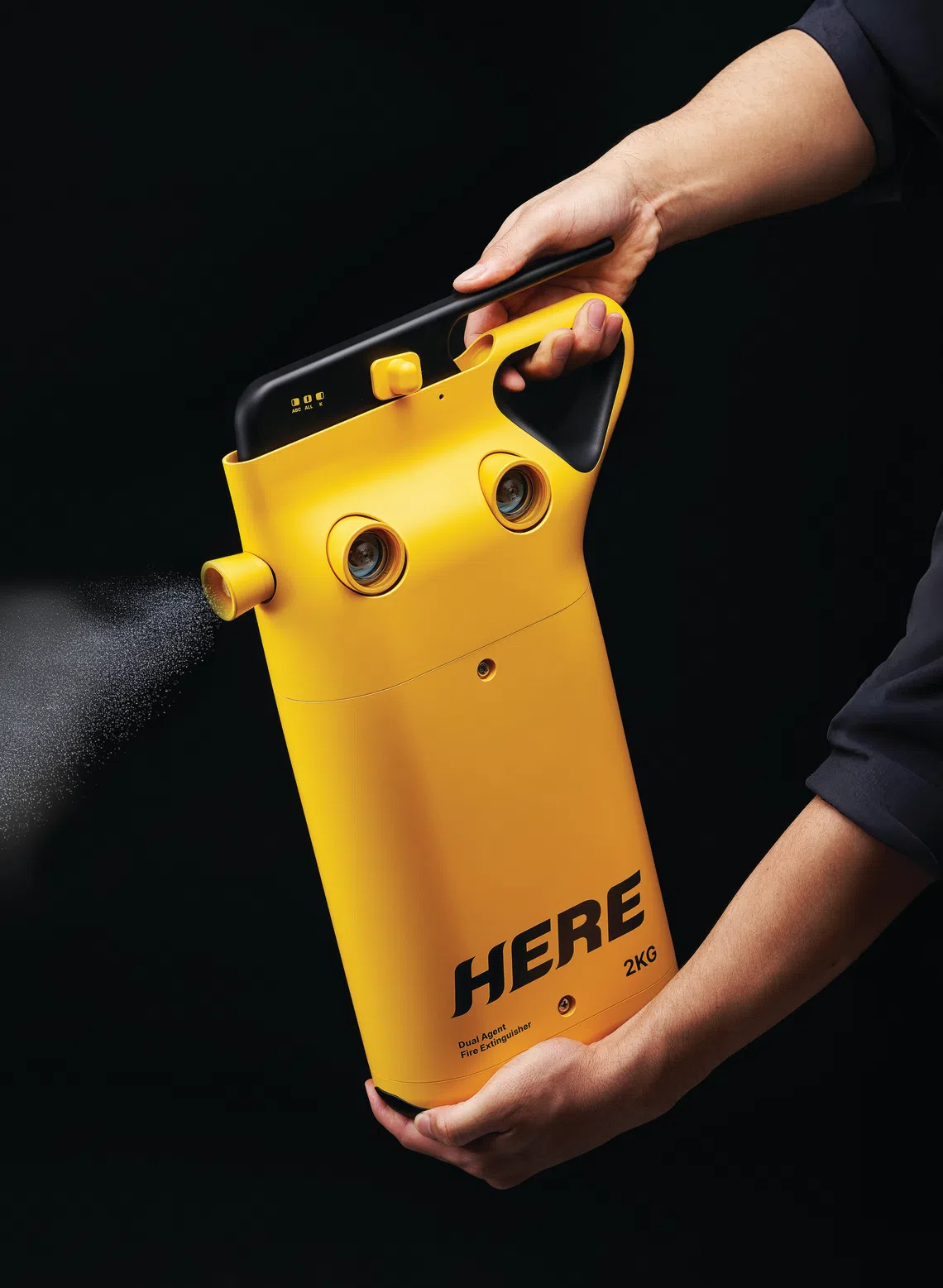
Did you know that standard fire extinguishers may be ineffective against kitchen fires caused by overheated cooking oil? Yet, it’s impractical to maintain multiple extinguishers at home – if you have one to begin with.
But considering the number of fires taking place in flats of late, we’d like to think this is a great solution. This innovative extinguisher has two containers for different agents in a single unit – ABC powder for general fires and a liquid agent for kitchen fires. For enhanced fire safety, you can select the appropriate agent or discharge both simultaneously. User comfort was also prioritised in its design, with a comfortable grip in place.
We’d like to order one please.
Midea Split-Cabin Dishwasher by Foshan Shunde Midea Washing Appliances Manufacturing Co, China
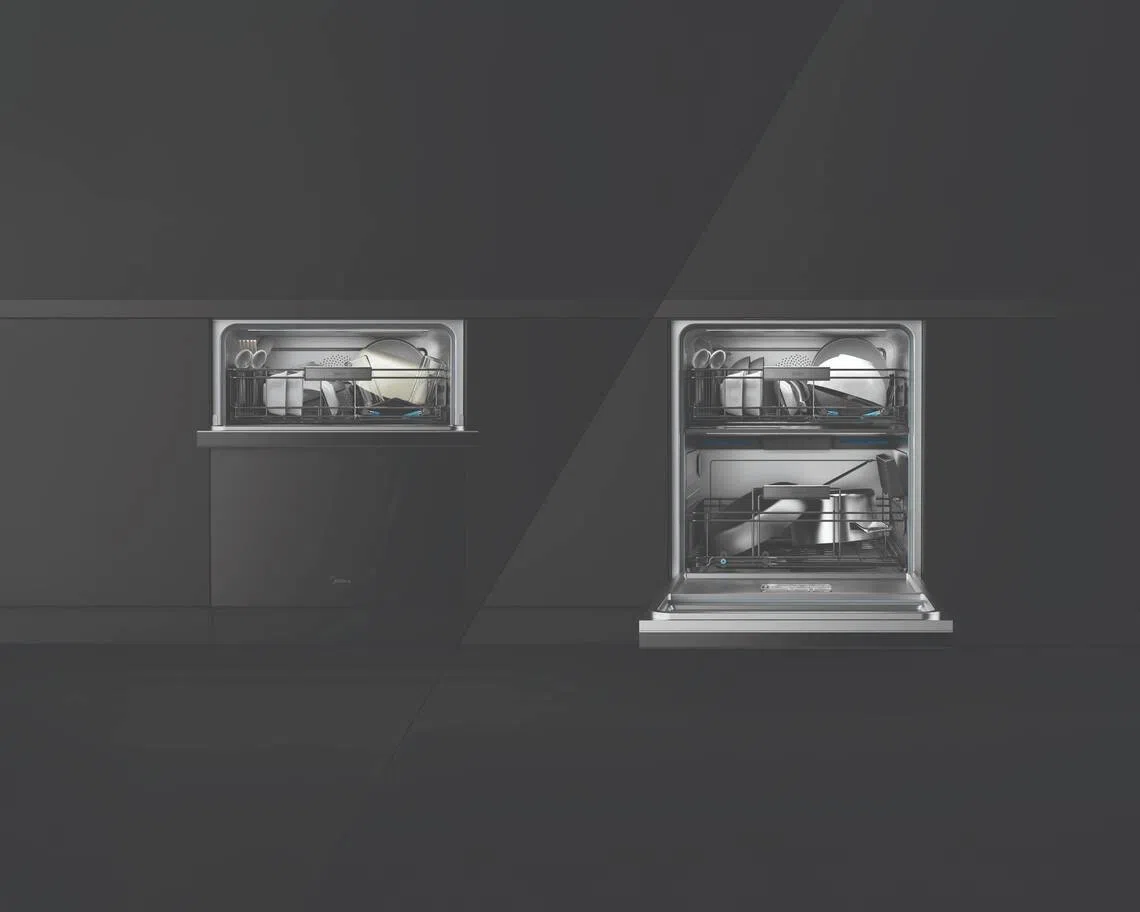
What happens when you’re too lazy to do the dishes but there aren’t enough for a full load in the dishwasher? It’s not ideal, but many people simply accumulate the dirty dishes till there are enough to run a wash cycle.
This is why Midea’s Split-Cabin Dishwasher makes a lot of sense. Its dual-chamber design and “wing wash” system allows users to easily switch between cleaning cups and dishes, while the water circuit boost effectively cleans stubborn stains. The single-cabin fast-wash option saves time and energy, while the upper cabin also offers features such as a UV sterilisation function, high-temperature steam quick wash and rapid-drying capabilities.
Magic Cooking Centre 2.0 by Vatti Corp, China
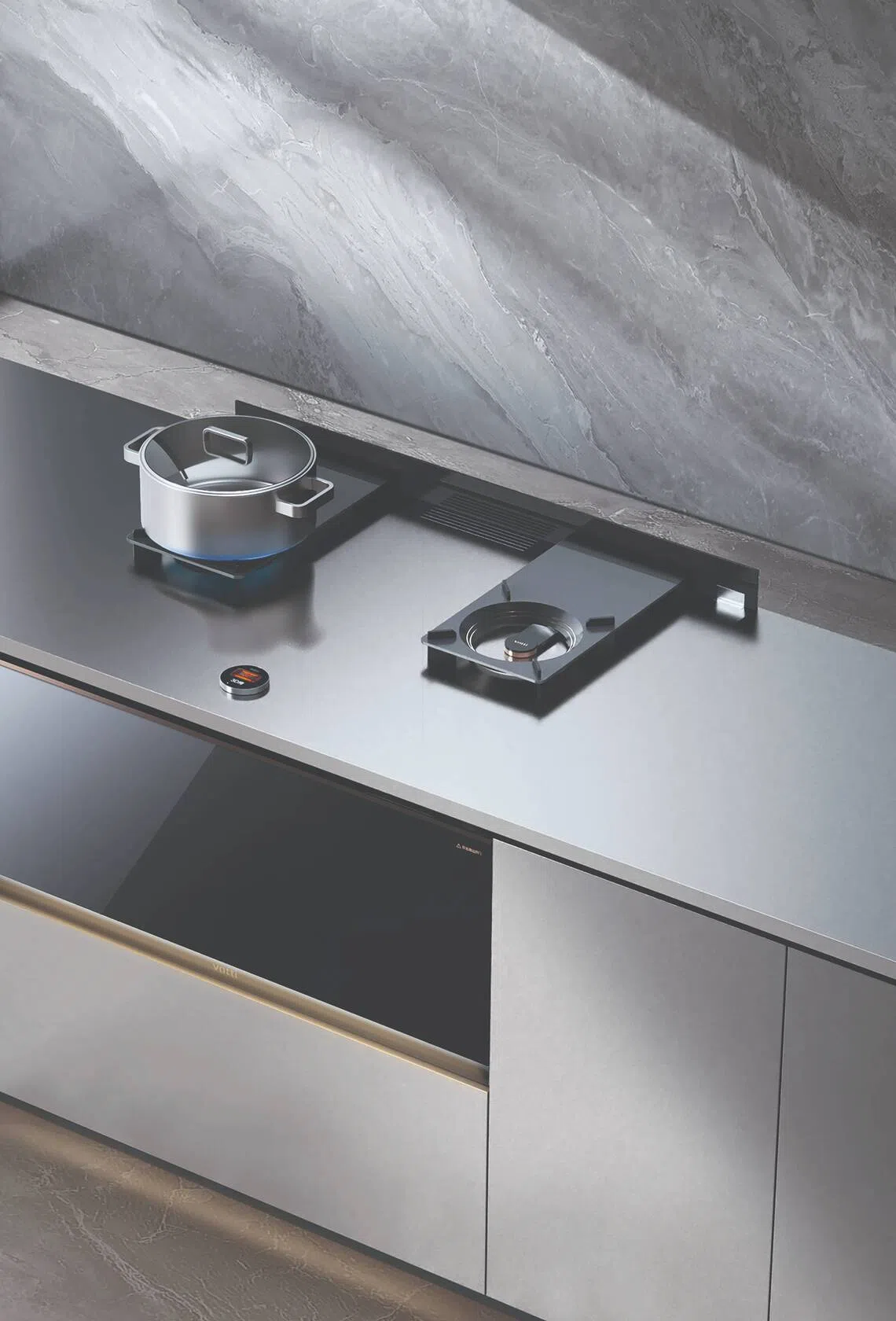
Hands up those who enjoy cooking but hate cleaning and clutter – this could be the cooking solution for you. The Magic Cooking Centre features a space-saving hidden cooker so that you can keep your kitchen counter sleek and clear when you’re not cooking, and also makes cleaning easier.
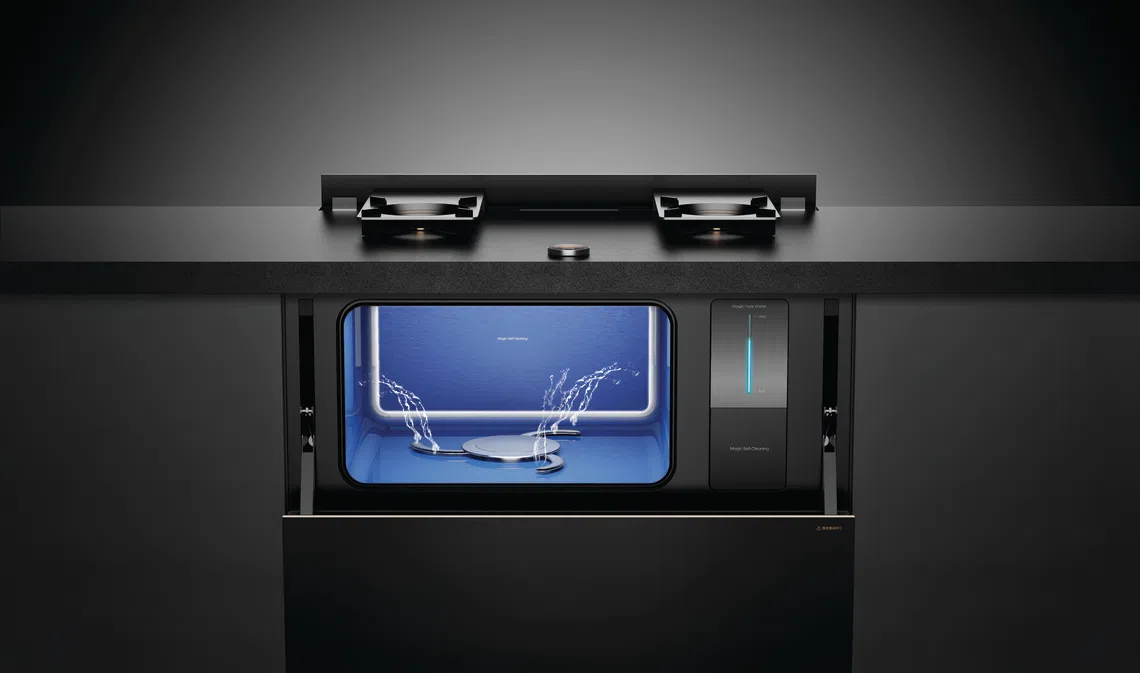
The Centre comes with an oven (concealed behind a glass panel) that also offers steaming, microwave and self-cleaning functions. And if you’re not a confident cook, its built-in camera and AI will analyse ingredients, cook automatically and provide smart cooking information to guide you through the process.
Pulli Bin by Pulli, the US
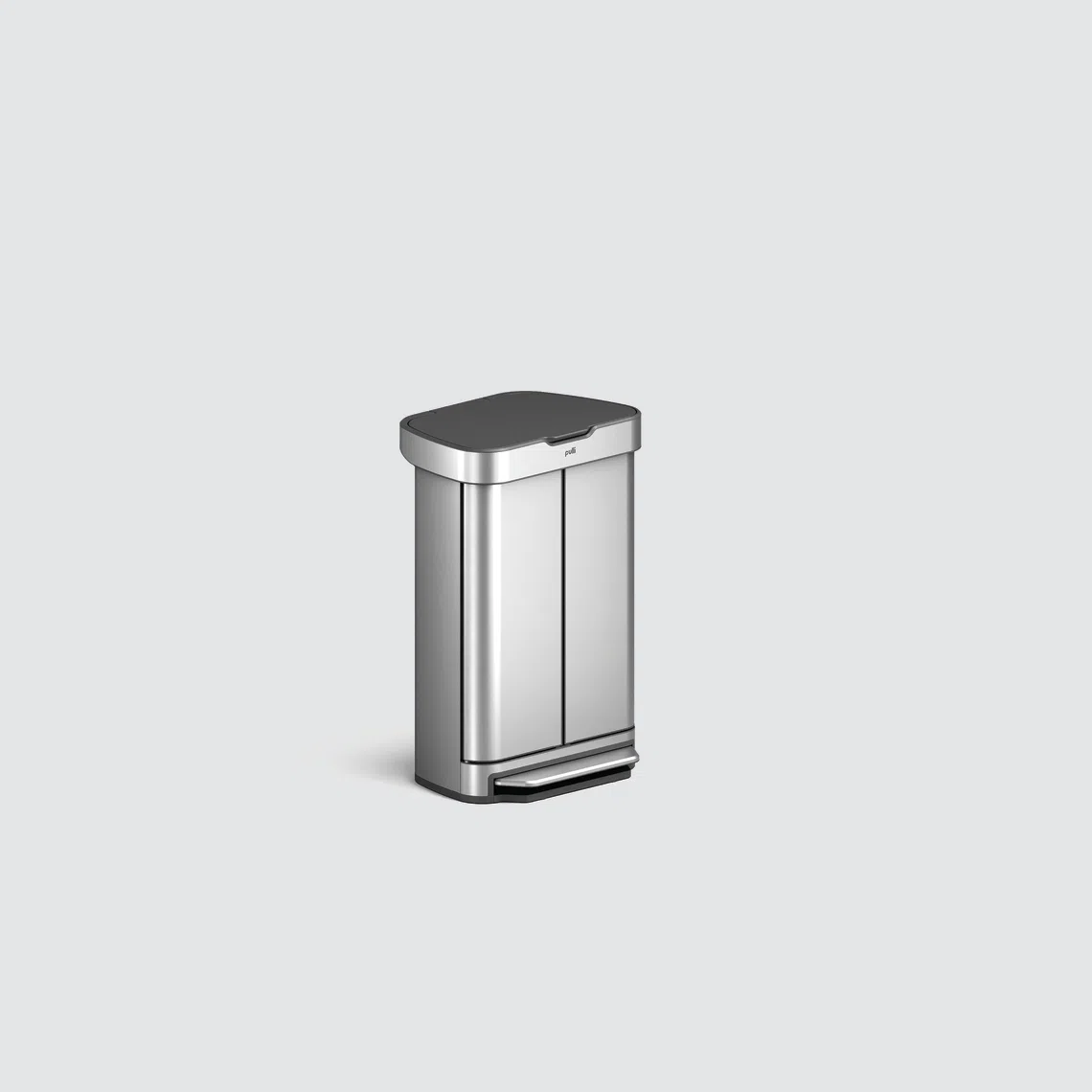
This is one of those designs which make you go: “So simple. Why didn’t someone think of this earlier?” Yes, the Pulli Bin is a reimagination of a household essential that should have happened long ago. Unlike conventional bins where the dreaded lifting of full trash bags can create strain and lead to bags tearing, this version with its dual front-opening doors and trapezoidal shape eliminate the need for upward hoisting.
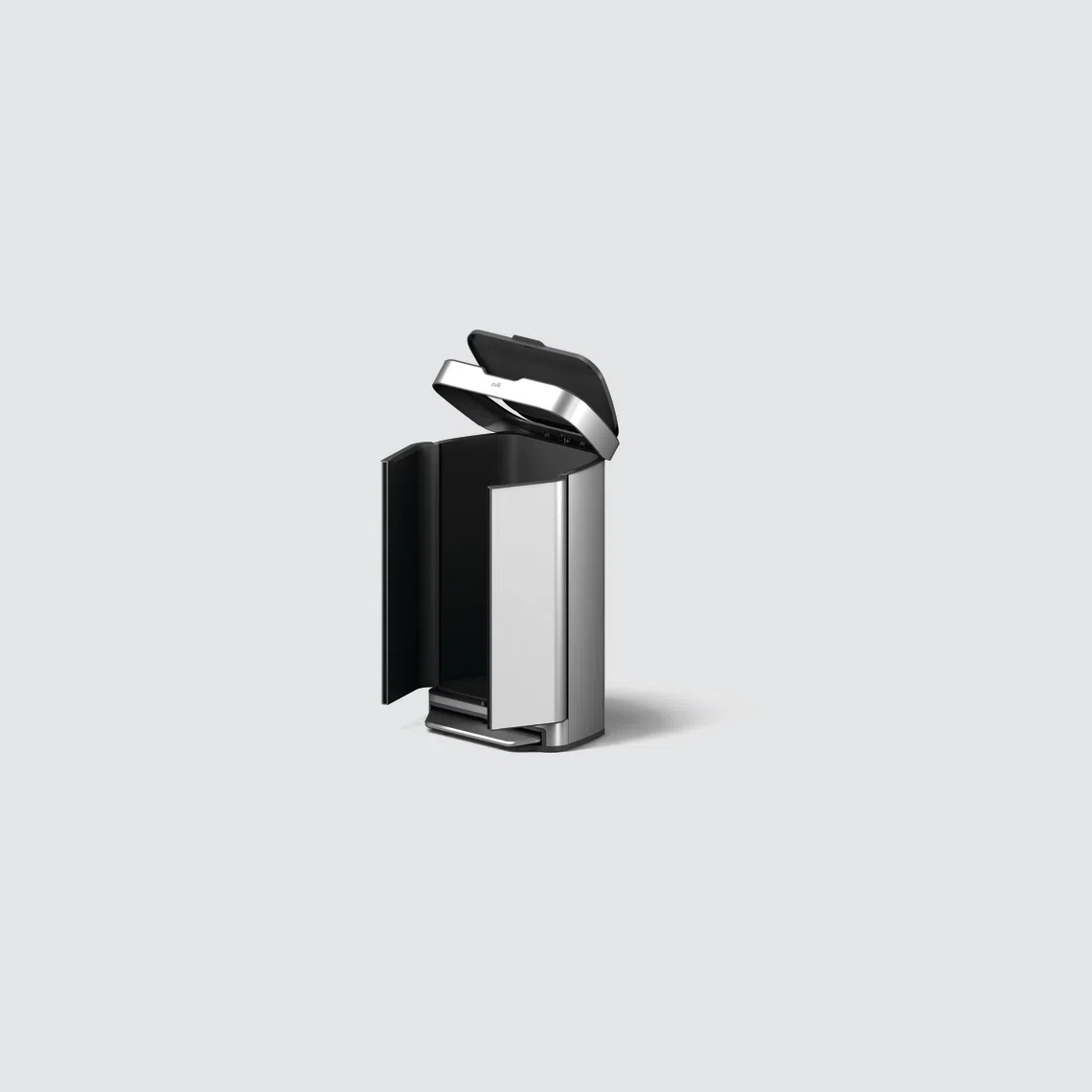
Developed over three years with extensive user testing, the design includes a lift-tab for users with limited mobility and offers an intuitive, inclusive and enduring solution to an everyday problem.
Angel Robotics Walkon Suit F1 Vision Concept by Move Lab, Kaist, South Korea
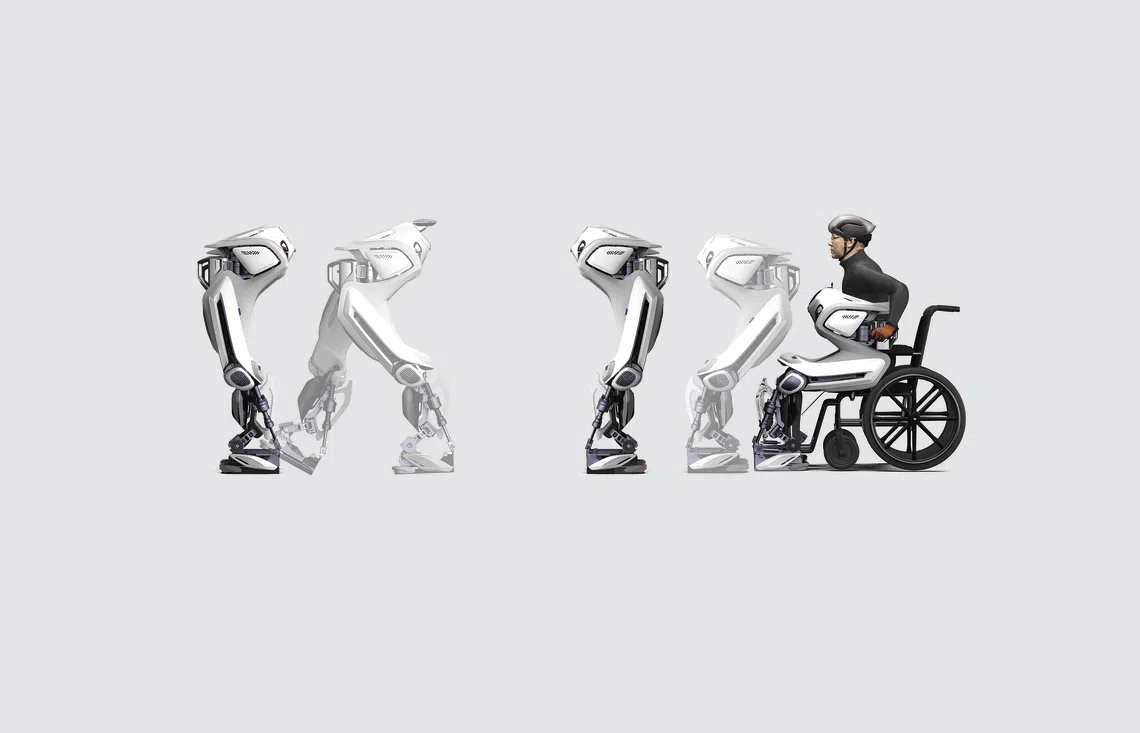
The future of personal mobility devices could look like this – a robotic suit that can be worn independently and provide multi-directional motion with self-balancing technology, so one can walk freely.
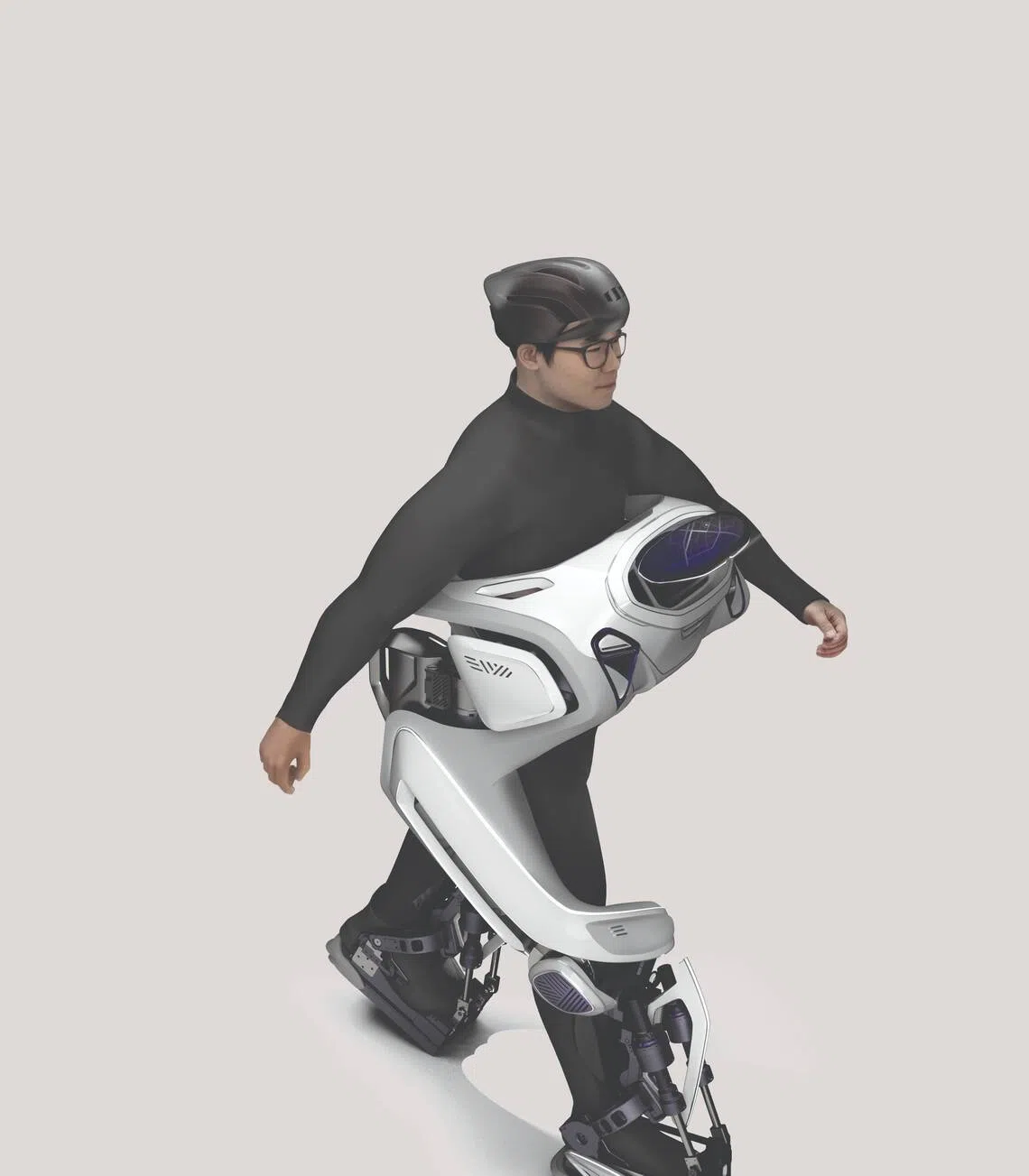
This concept – which looks like a hybrid between a mobility device and a wearable robot – features a centre-mounted screen displaying satellite navigation and downward and rear vision. Autonomous walking is also supported by a helmet-mounted rearview camera for added safety. The suit looks like something out of science fiction right now, but so did touch screens years ago. Should it transition from idea to reality, it could offer freedom and mobility to ageing populations the world over.
Lune – A Waxing And Waning Celestial Object by Massey University, New Zealand
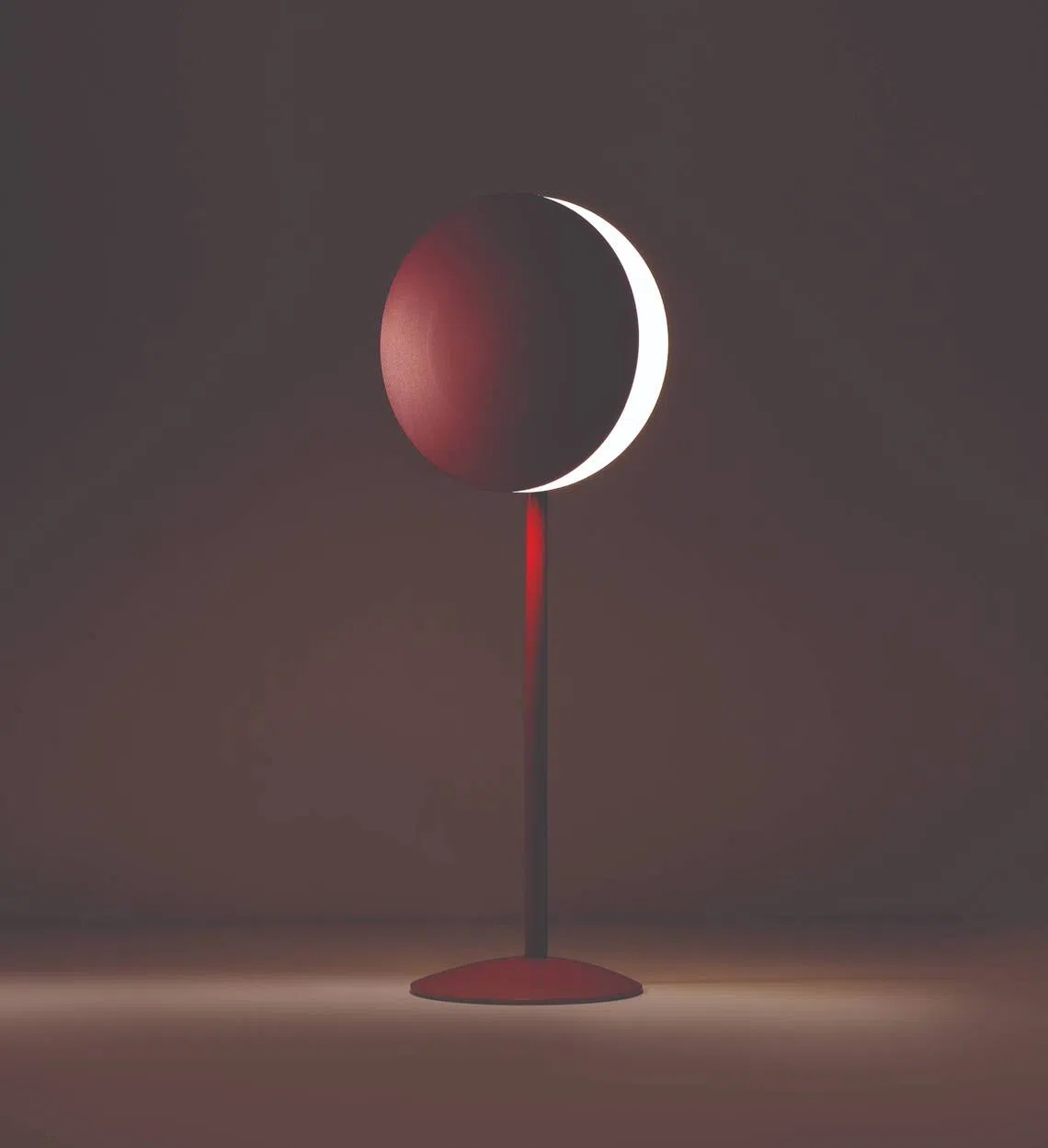
Lune is a special kind of lamp that explores the relationship between man and the night sky through ambient lighting. A light source housed between two aluminium discs casts a band of light across the room. By touching, pinching, twisting and tilting the discs, you customise the lighting effect.
For instance, a gentle pinch draws the discs together, cutting off light transmission on one side while simultaneously – and dramatically – ejecting light into space on the other side. A rotational dimmer dial atop the stem enables control of the light intensity with a simple twist, while a hinge allows the discs to tilt gracefully and accommodate a range of lighting positions. Simple and elegant, Lune is more than a conventional lamp because it allows users to compose light, affect mood and orchestrate spatial experience through ambient lighting.
Urban by Seo A-hyun, Moon Kisub, Kang Yunkwon, Lim Junwoo and Park Jimin, South Korea
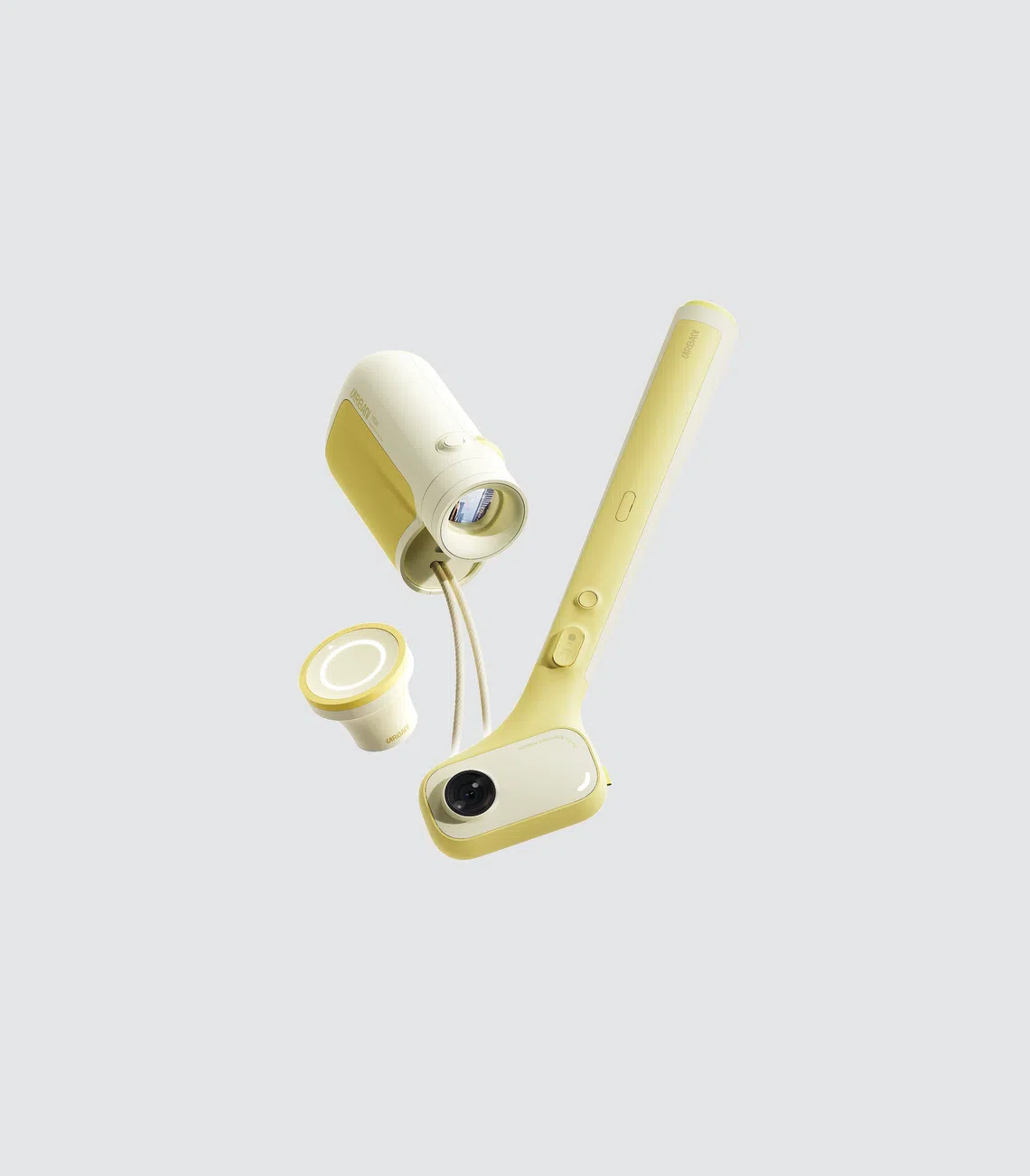
This is a form of golf that its creators foresee can be enjoyed anytime, anywhere. Instead of going to traditional golf courses, it responds to off-course alternatives such as screen golf by reimagining city spaces as potential places for a game.
Urban consists of three components: Club, Tee and View. The Club captures swings using a 360-degree top camera and two 180-degree wide-angle side cameras, one of which can be detached as a bodycam, enabling the recording of movement following the swing. The Tee features hidden lights to guide ball positioning, while the View is equipped with an AI camera that tracks the ball’s trajectory. A rear camera allows users to follow the ball’s path, and if it moves out of sight in the city, AI synthesises image data, such as road views and photos, to generate a video.
Given that many of Singapore’s golf courses will soon disappear, golfers may have to settle for inventions such as Urban in years to come.
All winners of the Red Dot Award: Design Concept 2025 are showcased at the winners’ exhibition at the Red Dot Design Museum and on www.red-dot.org
Decoding Asia newsletter: your guide to navigating Asia in a new global order. Sign up here to get Decoding Asia newsletter. Delivered to your inbox. Free.
Copyright SPH Media. All rights reserved.



